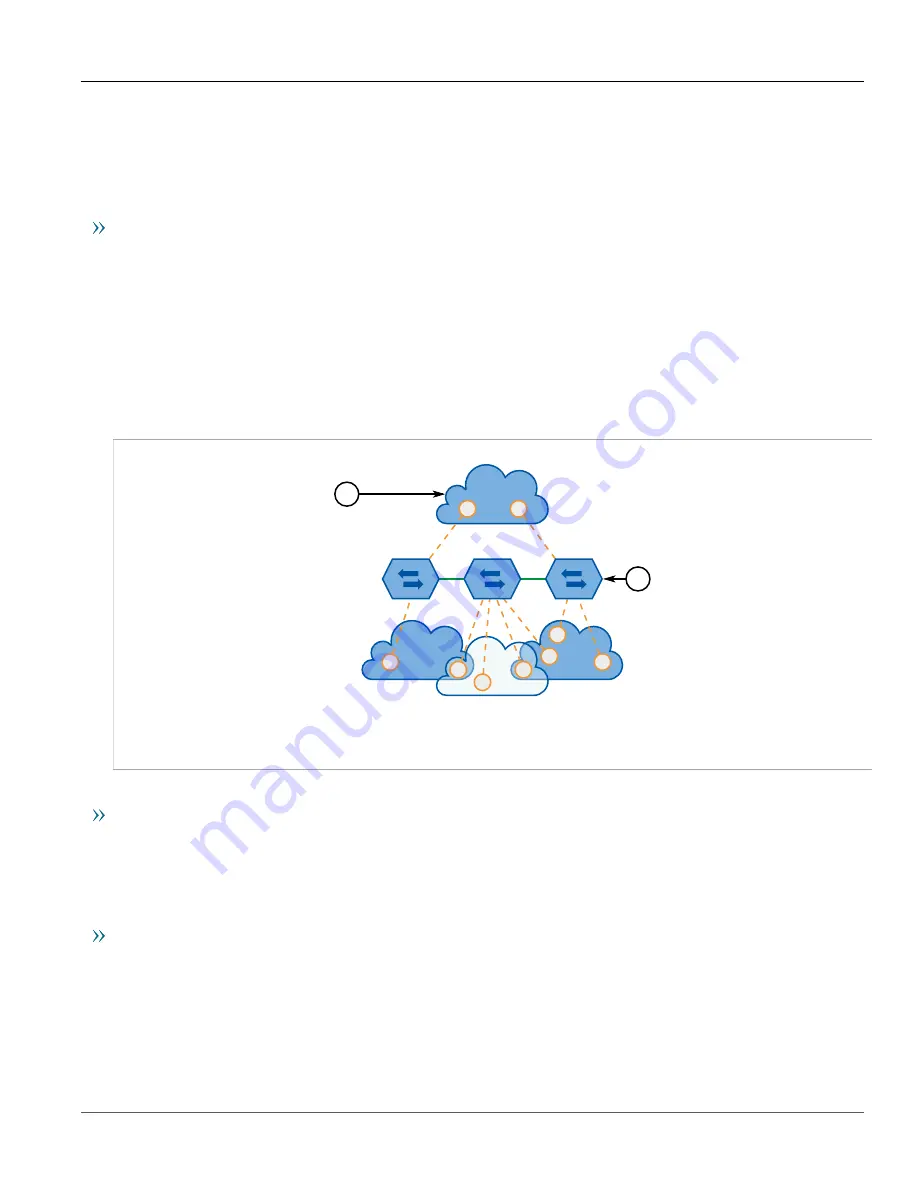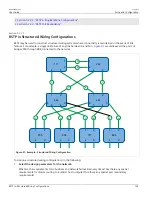
Chapter 5
Setup and Configuration
RUGGEDCOM ROS
User Guide
140
VLAN Advantages
Section 5.1.1.11
VLAN Advantages
The following are a few of the advantages offered by VLANs.
Traffic Domain Isolation
VLANs are most often used for their ability to restrict traffic flows between groups of devices.
Unnecessary broadcast traffic can be restricted to the VLAN that requires it. Broadcast storms in one VLAN need
not affect users in other VLANs.
Hosts on one VLAN can be prevented from accidentally or deliberately assuming the IP address of a host on
another VLAN.
The use of creative bridge filtering and multiple VLANs can carve seemingly unified IP subnets into multiple
regions policed by different security/access policies.
Multi-VLAN hosts can assign different traffic types to different VLANs.
2
3
5
4
2
1
Figure 79: Multiple Overlapping VLANs
1.
VLAN
2.
Switch
Administrative Convenience
VLANs enable equipment moves to be handled by software reconfiguration instead of by physical cable
management. When a host's physical location is changed, its connection point is often changed as well. With
VLANs, the host's VLAN membership and priority are simply copied to the new port.
Reduced Hardware
Without VLANs, traffic domain isolation requires the use of separate bridges for separate networks. VLANs
eliminate the need for separate bridges.
The number of network hosts may often be reduced. Often, a server is assigned to provide services for
independent networks. These hosts may be replaced by a single, multi-horned host supporting each network on
its own VLAN. This host can perform routing between VLANs.
Multi-VLAN hosts can assign different traffic types to different VLANs.
















































